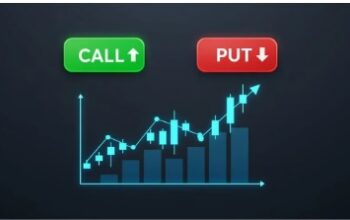Carbon credit trading is changing the way businesses tackle climate change. Understanding this growing market is key, whether you’re a business owner, investor, or eco-conscious individual. This beginner-friendly guide breaks down how carbon credits work, who trades them, and how they help reduce global emissions. Learn the benefits, challenges, and future of carbon markets in simple terms—so you can take part in building a more sustainable tomorrow.
As the world becomes more aware of climate change, industries are held accountable for their carbon emissions. One way to manage this is through carbon credit trading. This system allows businesses to buy and sell credits that represent permission to emit a certain amount of carbon dioxide.
In carbon credit trading, one credit usually equals one metric ton of carbon dioxide. Companies that emit less can sell their extra credits, and those that exceed limits can buy more. This encourages efficiency and sustainability.
How Does It Work?
Carbon credit trading is part of a larger framework called “cap-and-trade.” Governments or environmental bodies set a cap on total emissions. Companies get a certain number of credits under that cap. They can then:
- Use the credits for their emissions.
- Sell unused credits to other companies.
- Buy extra credits if they exceed their limit.
This creates financial motivation for companies to reduce their carbon footprint.
Why Carbon Credits Matter
Here’s why the carbon credit system is gaining momentum:
- Incentivises sustainability – Efficient companies can earn revenue by selling their unused credits.
- Promotes innovation – Businesses invest in clean tech to reduce emissions.
- Supports climate goals – It helps countries meet their international climate commitments.
The market aligns environmental impact with financial incentives. That’s a win-win.
Types of Carbon Credit Markets
Carbon credit trading happens in two major markets:
1. Compliance Market
- Mandated by government regulations.
- Used by industries in sectors like energy, aviation, and manufacturing.
- Operates under strict rules.
2. Voluntary Market
- Not regulated by law.
- Individuals and companies buy credits to offset emissions voluntarily.
- Popular with eco-conscious brands.
Both markets contribute to global efforts to reduce carbon emissions.
Who Buys and Sells Carbon Credits?
Participants in this market include:
- Corporations – especially those in high-emission sectors.
- Governments – To meet national or international targets.
- Nonprofits and NGOS – Working on climate initiatives.
- Farmers and landowners who adopt eco-friendly practices and generate carbon offsets.
On the supply side, credits are created through:
- Renewable energy projects.
- Forest preservation.
- Methane capture.
- Carbon farming.
These projects are verified by third parties to ensure legitimacy.
How Are Credits Verified?
Carbon credits must undergo a verification process before being sold. Independent organisations certify that the emissions reductions are real, measurable, and permanent.
Popular verification bodies include:
- Verra
- Gold Standard
- American Carbon Registry
These groups ensure transparency and prevent fraud or double-counting.
Risks and Challenges
While carbon credit trading is powerful, it’s not perfect. Here are some common challenges:
- Greenwashing – Some companies buy credits to appear eco-friendly without reducing actual emissions.
- Complexity – The market is still evolving and hard to navigate for beginners.
- Price volatility – Credit prices can swing depending on demand and regulation.
Still, with the proper oversight, these issues can be managed.
How to Get Started with Carbon Credit Trading
If you’re interested in getting involved, here’s how:
- Educate yourself – Understand how the system works.
- Pick your market – Compliance or voluntary.
- Choose a platform or broker – Many online marketplaces offer trading services.
- Track emissions – Monitor your carbon footprint to know how many credits you need.
- Trade wisely – Set goals and a budget for buying or selling credits.
For businesses, consulting an environmental expert can help build a strategy.
Benefits for Businesses and the Planet
Engaging in carbon credit trading offers multiple benefits:
- Brand Reputation – Being eco-conscious improves customer trust.
- Cost Savings – Energy efficiency leads to reduced operational costs.
- New Revenue Streams – Selling excess credits brings in profits.
- Environmental Impact – Supports global sustainability.
This system is more than a trend—it’s becoming a critical part of how businesses align with climate goals.
The Future of Carbon Credit Trading
The carbon market is expected to grow rapidly. With governments tightening climate regulations and consumers demanding sustainability, trading carbon credits will likely become standard business practice.
Emerging trends include:
- Blockchain for credit transparency.
- AI for emissions tracking.
- Carbon offset subscriptions for individuals.
As the world pushes toward net-zero, this market will play a central role in shaping a cleaner future.
Final Thoughts
Carbon credit trading offers businesses and individuals a practical path to contributing to the fight against climate change. While it’s not a silver bullet, it is a powerful tool when used correctly. Understanding how it works, the players involved, and its potential risks will help you make informed decisions and support real environmental progress.










